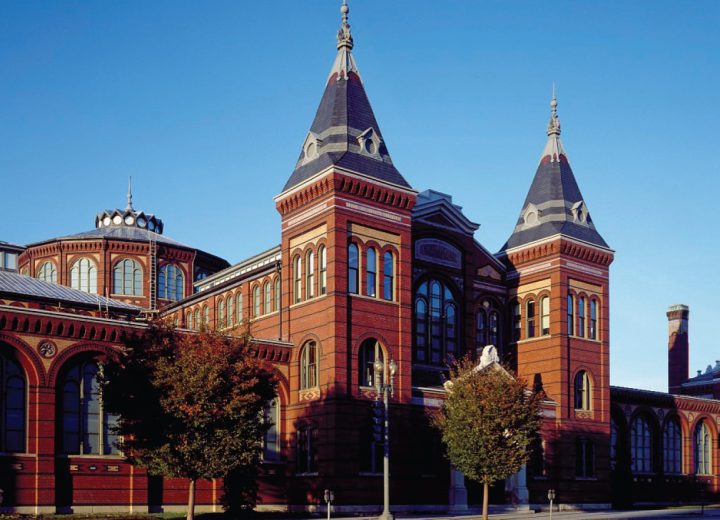Smithsonian Institution Arts & Industries Building
Roof Repairs & Building Enclosure Consultation
The original home of the National Museum, the Arts and Industries Building of the Smithsonian Institution opened in 1881, in time for James Garfield’s inauguration as the nation’s twentieth president. Designed in the High Victorian style by architectural firm Cluss and Schulze, the building has a symmetrical plan, with a Greek cross and central rotunda anchoring covered courts and windowed ranges.
Despite a number of roof repairs, the building was plagued with leaks, some severe enough to warrant suspension of tarps from the rafters to protect exhibit halls below. Plaster ceilings sustained extensive water damage, and steel roof deck panels were badly corroded. The Smithsonian decided that it was time to determine the cause of the recurrent problems and resolve them.
Hoffmann Architects + Engineers investigated water entry at the lead-coated copper and slate roofs. Incorrect installation and inadequate waterproofing design were found to be the root causes of moisture infiltration. In an escalating cycle of deterioration, water-damaged components admitted still more water into the system, leading to ever more serious degradation. While comprehensive and lasting renovation plans could be developed, Hoffmann designed and oversaw interim roof weatherproofing to protect the Museum’s collections.
On behalf of the Smithsonian Institution, Lend Lease retained Hoffmann Architects + Engineers for design and contract document review services for the comprehensive building enclosure rehabilitation. Our architects and engineers reviewed contractor proposals and submittals to establish conformance with the design documents and visited the Museum weekly throughout the 30-month construction schedule to evaluate the progress and quality of the work.
One of the primary goals of the revitalization project was to achieve Leadership in Energy and Environmental Design (LEED) Gold certification. Beyond sustainability and energy efficiency considerations, weather integrity of the building enclosure was a prime concern. To this end, Hoffmann provided the Smithsonian Institution with an assessment of building envelope rehabilitation strategies in terms of energy performance and durable design, and our architects and engineers facilitated water and air infiltration testing to identify deficiencies. Where testing revealed signs of leaks, our design professionals recommended corrective action and oversaw re-testing until the assembly passed the rigorous evaluation.
Hoffmann provided contract administration services for roof system replacement of steep- and low-slope metal roofs, window replacement, and modifications to the masonry facade to improve energy performance. By increasing the insulation values of the roof and using super-insulated glass with an innovative dot-matrix coating to reduce heat gain, the design team was able to reproduce the natural light transmission of the original 1881 glazing, while dramatically improving energy performance of the building enclosure.
